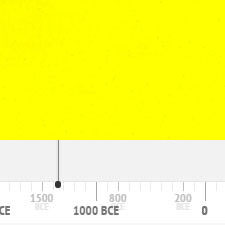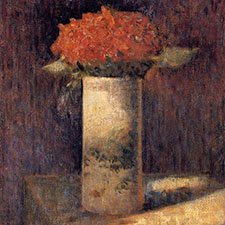Indian Yellow
Natural organic pigmentComposition and Properties of Indian Yellow
The principal components of Indian yellow are calcium and magnesium salts of euxanthic acid. It is moderately stable and fairly lightfast.
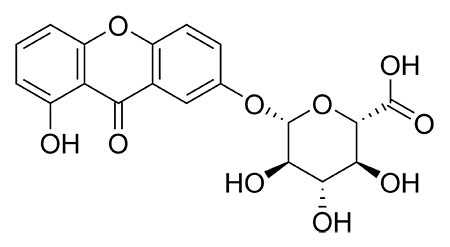 Structure of euxanthic acid
Structure of euxanthic acid
Video: 'Making Indian Yellow' by Nada Makes

Pigment

Painted swatch
Names
Alternative names
Euxanthine, snowshoe yellow, peori, purree, gogili, gaugoli
Color Index
NY 20, CI 75320
Word origin
Named after India
Indischgelb
German
Jaune indien
French
Giallo indiano
Italian
Amarillo indio
Spanish
Preparation
The pigment was prepared in India from the urine of cows fed exclusively on mango leaves. The urine was evaporated and the resulting raw product was sold in the form of balls.
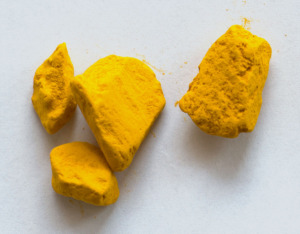
Lumps of the pigment
History of Use
The first occurrences in paintings date from around the 15th century. It was used mainly in India. Due to its solubility in water the pigment was used in watercolor and only seldom for glazing.
References
(1) Yonghui Zhao, Roy S. Berns, Lawrence A. Taplin, James Coddington, An Investigation of Multispectral Imaging for the Mapping of Pigments in Paintings, in Proc. SPIE 6810, Computer Image Analysis in the Study of Art, 681007 (29 February 2008); doi: 10.1117/12.765711. Available as pdf.
(2) Kühn, H., Die Pigmente in den Gemälden der Schack-Galerie, in: Bayerische Staatsgemäldesammlungen (Ed.) Schack-Galerie (Gemäldekataloge Bd. II), München 1969.
Examples of use
August Wolf, Enthroned Madonna with Angels and Saints, 1870-71 at the Pinakotheken, Munich (1).
Vincent van Gogh, The Starry Night, 1889
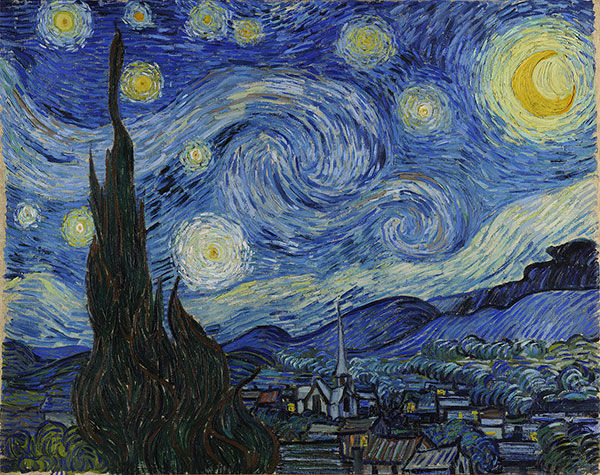
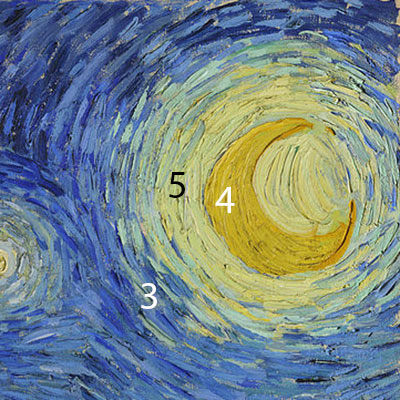
4 The deeper yellow of the Moon and the stars: indian yellow and zinc yellow.
5 Brighter yellow surrounding the stars and the Moon: possibly cadmium yellow.
Identification
Raman Spectrum
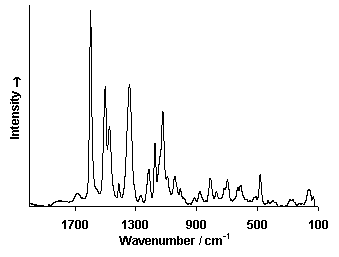 Spectrum by Ian M. Bell, Robin J.H. Clark and Peter J. Gibbs, Raman Spectroscopic Library
Spectrum by Ian M. Bell, Robin J.H. Clark and Peter J. Gibbs, Raman Spectroscopic Library
University College of London
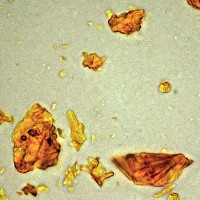
Microphotograph
image © Volker Emrath
Further Reading
References
(1) N.S. Baer, A. Joel, L. Feller and N. Indictor, Indian Yellow, in Artists’ Pigments. A Handbook of Their History and Characteristics, Vol. 1: Feller, R.L. (Ed.) Oxford University Press 1986, pp. 17-36. Available as pdf from the National Gallery of Art.
(2) John Stenhouse, Examination of a yellow substance from India called Purree, from which the pigment called Indian Yellow is manufactured, The London, Edinburgh and Dublin Philosophical Magazine and Journal of Science, third series, November 1844.
(3) Ploeger, Rebecca and Aaron Shugar. The story of Indian yellow – excreting a solution. Journal of Cultural Heritage
Volume 24, March–April 2017, Pages 197-205.
(4) R. Ploeger, A. Shugar, G.D. Smith and V.J. Chen, Late 19th century accounts of Indian yellow: The analysis of samples from the Royal Botanic Gardens, Kew, Dyes and Pigments, Volume 160, January 2019, Pages 418-431.
(5) Diego Tamburini, Charlotte Martin de Fonjaudran, Giovanni Verri, Gianluca Accorsi, Angela Acocella, Francesco Zerbetto, Amarilli Rava, Samuel Whittaker, David Saunders, Sharon Cather, New insights into the composition of Indian yellow and its use in a Rajasthani wall painting, Microchemical Journal, Volume 137, 2018, Pages 238-249, ISSN 0026-265X,
https://doi.org/10.1016/j.microc.2017.10.022.
S. Muntwyler, J. Lipscher, HP. Schneider, Das Farbenbuch, 2nd. Ed., 2023, alataverlag Elsau, pp. 146-147.

